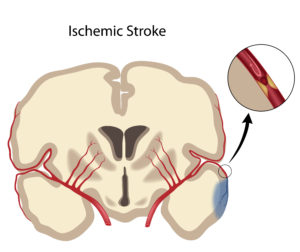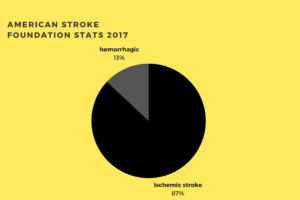March 16, 2015
How to Relieve Sciatica Pain Acupressure
December 7, 2014
Acupuncture In Stroke Treatment
What is a Stroke and can Acupuncture Help with Rehabilitation?

What is Stroke?
A stroke happens when blood flow to an area of brain is cut off. It can happen to anyone at any time no matter what age. Brain cells are deprived of oxygen and begin to die causing impairment of different motor functions and neurological deficits. Severity of the stroke depends on where the stroke occurs in the how much the brain is damaged. Problems such as temporary weakness of an arm or leg on one side may occur and people who have larger strokes may be permanently paralysed on one side of their body and even lose their ability to speak.
Stroke Statistics
- 795,000 per year in the USA
- 15 million worldwide
- 4th leading cause of death per year
- 1st leading cause of neurological disability
- 2/3 occur > age 65 but younger
Risk factors
- Atherosclerosis (plaque build up in the arteries)
- Chronic Hypertension (high blood pressure)
- Heart Disease
- Hypercholesterolemia
- Heavy Alcohol use
Types of Stroke
There are two types of stroke, Hemorrhagic and Ischemic. A hemorrhagic stroke occurs when there is a break or rupture in the blood vessels in the brain. The other type which is Ischemic stroke, occurs when there is a blood clot or plaque blocking blood flow to the brain. The last one is called TIA (transient ischemic attack) or mini stroke presents itself very much like an Ishemic stroke but lasts a few minutes or up to several hours. (Stroke Foundation)

Most strokes are Ischemic and account for up to 87% of strokes:

stroke treatment brisbane
Conventional Treatments for Stroke
Stroke is an emergency situation that requires immediate medical care. Patients are usually hospitalized for monitoring of vital signs and life support. Once symptoms are stabilized, patients will be discharged. As the brain starts to heal, some functions will return slowly but only to a limited extent. In order to recover more, rehabilitation therapy is needed.
Hemorrhagic stroke patients may require a surgery to drain the blood that has accumulated, to relieve the compression in the brain. In severe cases where there is swelling of the brain, a piece of the skull is removed to help decompress the brain.
Ischemic stroke patients are often given warfarin (also known by brand name coumadin). Warfarin is an anti-coagulant, a blood thinner. It prevents formation of new clots but it does nothing about clots that have already formed. Drugs known as “clot busting drugs” are also used help dissolve the clot as well once the location of the stroke is known. Sometimes a catheter is inserted into the area of the brain that is affected and the clot is removed surgically.
Once the acute stage is over and the stroke patient has stabilised, physical and occupational begins. It is a long and arduous process. Often times, progress is slow and it can be frustrating for the patient. The first 3 months are often the hardest. Patients are taught to reuse their affected side of the body again. Generally the recovery window for stroke recovery is 2 years. However, new research is now coming out that patients can still recover up to 5 years.
Neuro-fatigue
Stroke patients often feel tired and have no energy, That is because the brain is still trying to recover from and injury but at the same time still being used for daily functions. Imaging having a computer but having 15 apps running in the background. Although there may not appear to be much going on from the outside, there is so much happening in the brain because the brain is trying to multi=task so many things at once. On top of that, blood-thinning medications further induce fatigue because it causes stress on the liver to process the medication.
Goals of Treatment
The goal of any treatment of stroke, whether it is western or eastern medicine, is to help get the patient better. The goals are to not only relieve pain, but to give patients back the mobility and try to regain quality of life. This will require work not just from the therapist, but from the patient themselves and the support of loved ones

Does Acupuncture work for Stroke?
Does Acupuncture Work for Stroke Recovery?
One of the major key factors in whether or not acupuncture can help stroke patients is time. The sooner a patient can get acupuncture treatment, the better likelihood of good lasting results. The longer the wait, the more likely the muscles deteriorate and will be harder to make a full recovery. It is vital the patient keep moving and active to get the blood circulating again.
What is Scalp Acupuncture?
Scalp acupuncture has been practiced for thousands of years, dating back to ancient China. In modern acupuncture today it is one the most common treatments used for post-stroke recovery and as the name suggests, involves inserting acupuncture needles into acupoints in the scalp. In fact, scalp acupuncture rather than regular body treatment appears to be much more effective at treating neurological conditions including stroke.
The system we use at our clinic was discovered by Dr. Zhu Ming Qing, who is world famous for his work in helping stroke patients in their recovery. By combining traditional Chinese Medicine theory and western anatomy, points along the scalp are used to stimulate the brain and increase blood flow to the affected area.
How can Scalp Acupuncture assist stroke recovery?
Scalp acupuncture can be an effective way to improve neurological symptoms, including difficulty speaking/writing/reading, memory loss & reduction of motor skills, which can occur post-stroke.
The acupuncture needle insertion sites, being much closer to the affected areas of the brain, are believed to encourage the brains neuroplasticity by stimulating the cerebral cortex (region of the brain responsible for memory, perception, learning, cognition, awareness, language & motor function) (1). The needles are often stimulated slightly by the acupuncturist (this cannot be felt by the patient) and often left in for a number of hours afterwards.
Scalp Acupuncture Case study Below:
Below is case study from our Brisbane Acupuncture clinic:
How many treatments will it take to see results?
Normally, a course of 6 treatments is suggested to start with to see how the patient reacts. There should be some improvement in motor function during that time. If no improvement we do not suggest further treatment.
I’ve had a stroke a long time ago. Can acupuncture still help me?
Usually the more time has passed, the worse the prognosis. That doesn’t mean it is impossible. Often times we have patients who have had improvement in range of motion in the limbs and improvement in balance. Although 100% will be hard to achieve they may still improve their quality of life.
Questions on Stroke Acupuncture Brisbane? Email us at info@artofacupuncture.com.au
Bob Wong was raised in a traditional Chinese medicine family and moved to mainland China to study and train for almost a decade. During that time, he was able to learn from some of the top acupuncturists and Chinese Medicine practitioners in at the Guangzhou University of Chinese Medicine. His mission is not bring that knowledge and experience to help his patients.
Bob Wong currently maintains an acupuncture practice in the Brisbane area and lectures for workshops and seminars for practitioners..For more information you can read his full bio or schedule and appointment.
*The owner of this site is not liable for any misfortune that should befall a visitor to this site.This site does not offer personal advice & no information on it can be construed as personal advice. In the event that you may feel our therapies may be of benefit, we advise you to contact the clinic to make an appointment for diagnosis and treatment.
References:
stroke foundation: https://strokefoundation.com.au/About-Stroke
scalpacupuncture.org: http://www.scalpacupuncture.org
